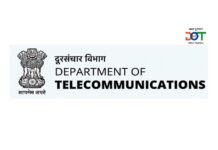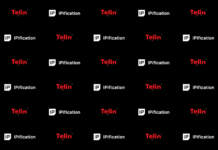As Asia goes on to embrace a digital-first future, there are forces shaping its connectivity infrastructure, which are also evolving in tandem. Although the spotlight often shines on emerging technologies such as 5G along with edge computing as well as satellite broadband, the foundations that enable this next wave of connectivity infrastructure in Asia happen to be quietly drawn by way of smart regulation and a more diverse vendor spectrum.
These two factors are often viewed as the supporting acts and are now stepping into major roles, thereby determining not just how the networks get built, but also how inclusive, dependable, resilient, and future-ready they are.
Regulations That Are Evolving
Throughout the region, governments as well as regulators happen to be rethinking their approach when it comes to telecom oversight. The erstwhile top-down, risk-averse structure is fading away and giving way to a more agile as well as innovative, friendly framework. Rather than going ahead and simply calling in compliance, there are many regulators who are now positioning themselves as kind of enablers who offer sandbox environments, therefore encouraging private-public partnerships and also enforcing infrastructure sharing in order to bridge that digital divide.
This sort of regulatory shift is specifically evident when it comes to fast-growing economies that are aiming to thwart the legacy infrastructure challenges. Through enabling more flexible spectrum use, supporting the experimental rollouts, and streamlining the licensing procedure, nations are indeed speeding up the deployment of next-generation connectivity.
It is worth noting that in July 2024, the Ministry of Communication and Informatics went on to issue technical standard number 352, thereby establishing novel guidelines for both 5G new radio and LTE technologies. This regulation goes on to define more frequency bands for subscribers as well as base stations, thereby looking to enhance mobile broadband services throughout Indonesia.
It was in August 2024 that the Hong Kong office of the communications authority gave its nod to the cessation of 2G services. The spectrum that was previously allocated to 2G services for the 900 MHz and 1800 MHz bands is now going to be repurposed to elevate 5G services, thereby reflecting a strategic transition towards the next-generation mobile networks.
In spite of this shift, cybersecurity, supply chain integrity, and data sovereignty happen to remain in the front and at the center. There are regulatory frameworks that are becoming more and more nuanced, thereby encouraging innovation and, at the same time, tightening controls across critical infrastructure as well as digital assets. The outcome is a delicate balancing act that looks forward to fueling digital transformation sans compromising trust, as well as national security.
Diversity of Vendors
Apart from the regulatory shifts, the telecom spectrum is also witnessing a prominent diversification when it comes to supply chain. These are no longer dominated by a few legacy equipment providers, but the market is welcoming a larger pool of vendors that span global players and start-ups.
This shift is getting the push due to the rise of open as well as disaggregated network architectures like open RAN.
All these kinds of approaches help the operators to mix and match elements from multiple vendors, thereby increasing their flexibility, and at the same time decreasing the risk that is associated with a single vendor dependency.
Apart from resilience, vendor diversity also fosters innovation. There are different providers that bring distinct strengths. Such as AI-powered network automation, rural connectivity solutions, and energy-efficient designs that are tailored to the markets that are underserved. For telecommunication companies, this means a larger set of opportunities to sync network investments along with local realities.
Local vendors, especially, happen to be gaining a lot of momentum. Due to a better understanding when it comes to regional leads and by having more agile development cycles, these local players enable local technology rollout. There is no shred of doubt that their presence makes national digital sovereignty more robust, and at the same time, it also creates opportunities in terms of regional as well as export partnerships.
For instance, NTT Docomo and China Mobile went on to develop the first multi-vendor eSIM in the world. NEC, on the other hand, is helping telecommunication companies to modernize their infrastructure by way of microservice-based solutions that create thriving opportunities within multi-vendor environments and cloud-native environments and eradicate vendor lock-in and, at the same time, enhance integration.
Apart from this in Australia, Telstra happens to be pushing the boundaries when it comes to intelligent connectivity by embedding artificial intelligence within operations in partnership with the traditional infrastructure vendors by showing that the strategic vendor partnerships can also drive efficiencies that are next generation.
In Vietnam, Viettel has gone on to launch a commercial open RAN 5G network, which is in collaboration with Qualcomm and has proven that interoperable systems can go on to support both private as well as public network demands while at the same time fostering a sustainable vendor ecosystem.
The Glue, Which Holds It All Together
With more and more vendors in the mix, interoperability has never seen such criticality. Operators now have to integrate hardware as well as software components from various providers and not compromise performance or even security. This is where the global benchmarks, certification programs, and joint testing labs play a very important role.
Efforts all across the sector are now converging to make sure that multi-vendor networks go on to remain as easy and secure as the legacy counterparts. Right from virtualized RAN setups to cloud-native core networks, achieving the plug-in and plug-out interoperability is not a luxury anymore, but it is a necessity to attain future-proof infrastructure.
It is well to be noted that in Asia, mandates that promote open interfaces are gaining a lot of speed in order to encourage innovation and interoperability. The telecom regulatory authority of India – TRAI and India’s Telecommunication Act 2023 happen to be pushing for spectrum and infrastructure sharing and aiming to foster a collaborative telecom environment. Moreover, there are others who are incentivizing the adoption of vendor-neutral platforms. The open RAN ecosystem in Japan, which is backed by government funding, goes on to support the multivendor deployment in order to decrease the dependence when it comes to specific suppliers.
South Korea is also promoting open RAN by way of government-industry collaboration, which aims to push domestic technology capabilities.
Meanwhile, when it comes to Singapore, its Infocomm Media Development Authority – IMDA, goes on to offer grants in order to discover and pilot interoperable 5G networks.
All these initiatives are indeed laying the groundwork when it comes to a new kind of telecom infrastructure – one that is dynamic, modular, and also innovation-led.
Using Policies and Procurement as a Catalyst
It is worth noting that regulations as well as procurement practices are going to be as influential as the technologies when it comes to shaping the connectivity infrastructure in Asia. Trusted vendor framework, smart spectrum policy, and climate-synced infrastructure mandates are all going to determine what kinds of innovations could gain traction and how quickly they can do that.
In the dynamic environment that we live in, collaboration is indeed going to be the key. Stakeholders across the spectrum, like telecommunication companies, regulators, vendors, and communities, will have to work together in order to define benchmarks, share any kind of threat intelligence, and also create possibilities that are not just cutting edge but at the same time secure.
Asia is standing at a very crucial moment when it comes to its connectivity journey. The convergence to progressive regulation and vendor diversity goes on to offer a robust springboard, not just to have more efficient networks but at the same time to be more inclusive and dependable digital societies.
As the foundation forces go on to mature, they are surely going to redefine what connected actually means. The idea is not only to be enabling faster speed and lower latency but also to ensure that the connectivity infrastructure in Asia is built on choice, dependability, and shared opportunity.



















